100th Anniversary Great Nave Tour at the Cathedral of St. John the Divine
Celebrate the 1925 construction of the stunning nave inside the world's largest Gothic cathedral!


Yesterday, Governor Andrew M. Cuomo and Mayor Bill de Blasio announced a citywide curfew in New York City from 11 PM to 5 AM this morning. The effect of the curfew seems to have been middling. Mayor Bill de Blasio tweeted over the course of last night that things were calm at Barclays Center, but there was damage and disturbance in Midtown and the Bronx. Today, de Blasio has extended the curfew for the rest of the week from 8 PM to 5 AM.
Curfews have occurred before in New York City, albeit very rarely. Many of the city’s curfews have lasted only a few days, and a number during major conflicts have received little media coverage in the past. But perhaps it may be surprising to learn that curfews have been implemented in New York City, even since the 1600s.
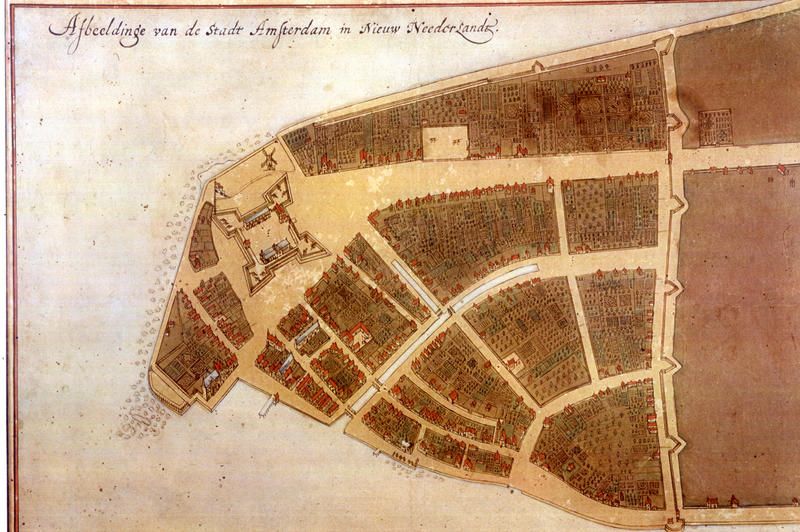
The original Castello Plan drafted in 1600 of Dutch New Amsterdam was found in the Villa de Castello in 1900 and was eventually donated to New York Public Library. Image via Wikipedia Commons.
Perhaps the earliest curfew in New York City occurred right after Dutch arrived, as nightfall brought disturbances to New Amsterdam like “drinking songs and angry curses,” according to Russell Shorto in The Island At The Center Of The World. In 1638, Peter Minuit released a series of scolding decrees that banned seafaring people to remain on shore after sunset without permission and prohibited people from selling wine at night, essentially a series of curfews.
When Peter Stuyvesant came to power as the Director General, he was met with much hate and aggression by many New Yorkers, which led him to establish a curfew “forbidding tavernkeepers from selling liquor on Sunday (until two in the afternoon).” These curfews would set a precedent for centuries to come in New York, as authority figures would often implement temporary curfews to stem anticipated violence or community disturbance.
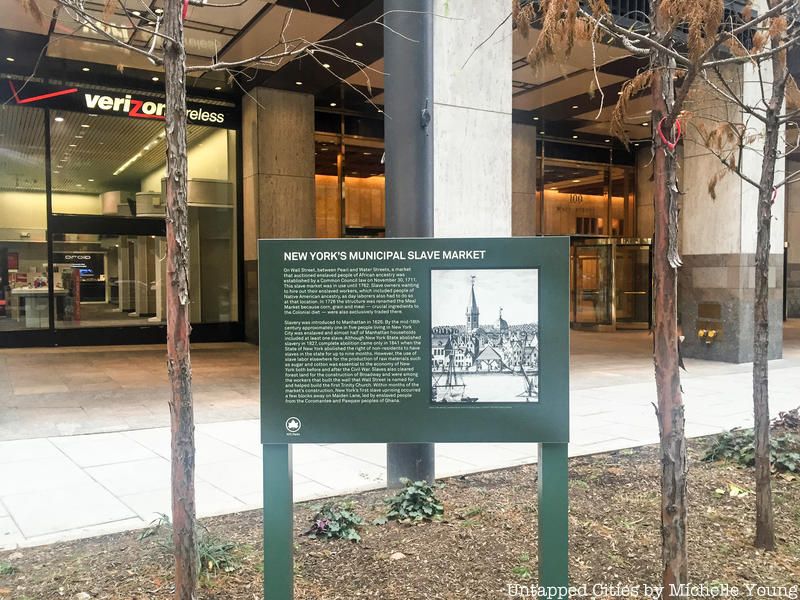
Slave market marker at Wall Street and Water Street
Sometimes curfews were applied to a specific population in New York City. In the early 1700s, the city had quite a large slave population — 42 percent of New York’s households had slaves. On Maiden Lane in 1712, 23 slaves rose up in the New York Slave Revolt in protest of restrictions placed on them, such as needing to carry a pass and being unable to meet in groups of more than three. Strict curfew laws for slaves were in effect in the 1700s within NYC, according to A History of Negro Slavery in New York by Edgar J. McManus. Curfew regulations were often relaxed to permit married slaves to visit their spouses, yet the city’s slaves were said to often violate these curfew laws and “disturbed the town with their pranks and drunken brawls.” According to McManus, “most slaves preferred punishment of any sort to leading lives devoid of human contact,” so slaves would often break curfew laws peacefully.
The last slaves were freed on July 4, 1827 in New York City, almost forty years before the passage of the Thirteenth Amendment but it should be remembered that New York City’s businessmen, political leaders, and media industry
were openly hostile to Abraham Lincoln and the efforts of the Union, a situation well documented in The City of Sedition: A History of New York City During the Civil War by John Strasbaugh.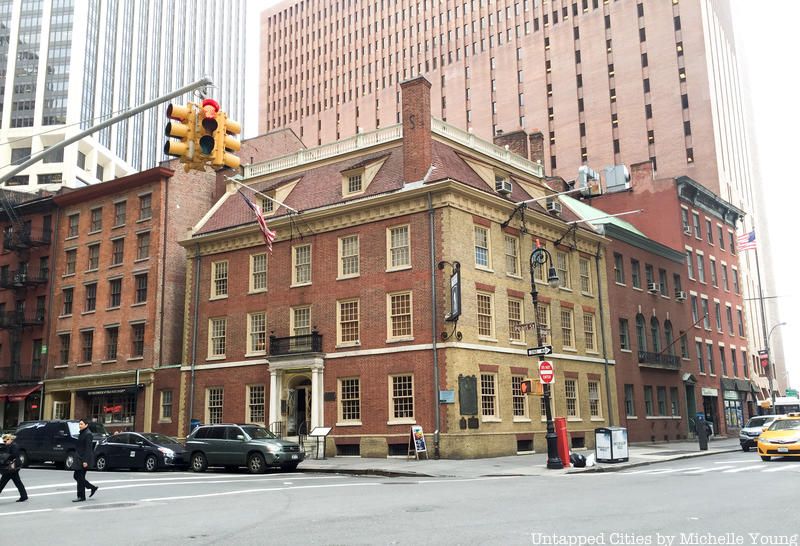
During the American Revolution, the British enforced very strict curfews on the streets of New York City. According to Robert Mulero and Catherine M. Hintze in their book The History and Design of New York City Streetlights, Past and Present, dark lanterns, an early form of lighting in the colonies, allowed for people to break curfews because the lanterns allowed no light to escape until someone opened a panel that concealed the flame. People could merely close the panel while outside to avoid arrest from the British.
David McCullough writes in his book 1776 that after two soldiers were found dead just a week after the Continental Army arrived in New York City, Washington condemned the “riotous behavior” and installed a strict curfew to prevent soldiers from rioting further. War prisoners were also subjected to a curfew, which was not as thoroughly enforced by British officers, who often participated in the town’s social activities.
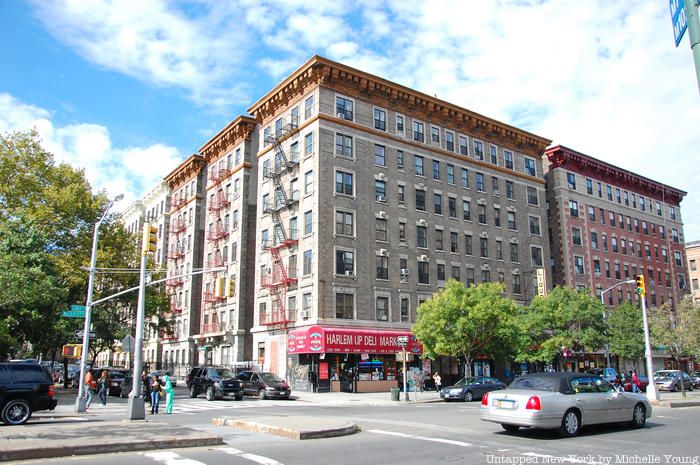
Two years earlier during the Harlem Riots of 1943, Mayor LaGuardia put a 10:30 PM curfew into effect asking Harlem residents to stay home. The riot began when James Collins, a white police officer, shot and wounded an Black soldier named Robert Bandy. While at the Braddock Hotel, a white policeman tried to arrest Marjorie Polite, a Black woman, for disorderly conflict, and soon after Polite became confrontational with Collins. Polite protested after she was dissatisfied with her hotel room, and she was asked to leave by Collins.
Soon after Bandy hit the officer, and Collins then shot Bandy, who was incorrectly believed to be dead when the riot began. After stores were looted and windows were smashed, LaGuardia issued a curfew to prevent even more injuries and deaths. Despite the curfew, the riot resulted in six deaths and around 600 arrests

Dimout in September Times Square during World War II. Photo by Marjory Collins from Library of Congress
In 1945 during World War II, the federal government instituted a nationwide curfew on nightlife, ordering all entertainment establishments across the country to close at midnight. Broadway was subject to “dim-outs.” In order to “conserve fuel and manpower for the boys overseas,” the federal government implemented a midnight curfew, which was met with frustration by residents of many urban areas. Yet New York City resisted the curfew and Mayor Fiorello LaGuardia changed the local closing time to 1 A.M., even though he was not granted special permission. Yet, despite this extension of the curfew, the curfew was lifted in April of that year as the war began to end.
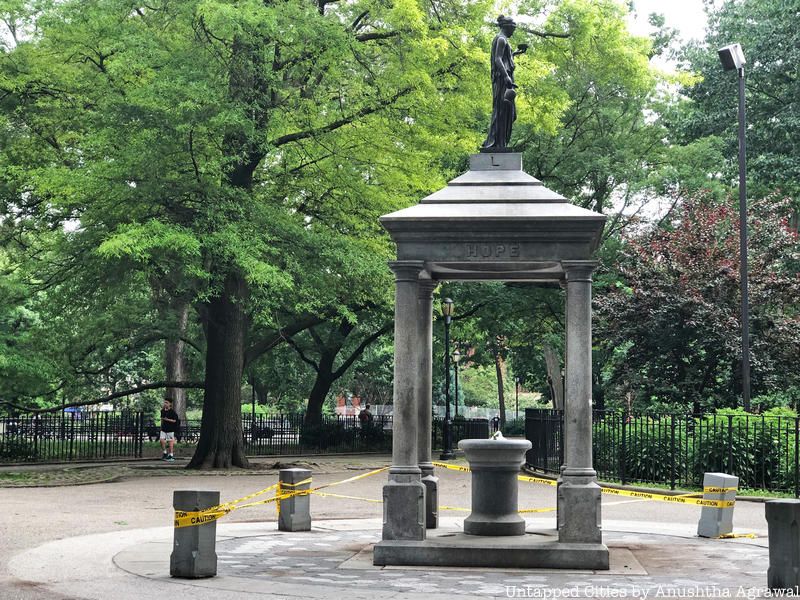
Tompkins Square Park
In 1988, Tompkins Square Park was the site of a massive riot in response to a curfew in the park. The park had seen an earlier riot in 1874 after the NYPD clashed with a demonstration of thousands of unemployed city residents, many heavily impacted by the earlier Panic of 1873. By the late 20th century, the park was home to over 150 homeless people, as well as drug pushers and all-night street parties. After residents complained about the park, Community Board 3 approved a proposal for a 1 A.M. curfew, which was later enacted by the Parks Department.
Immediately after the curfew was put into effect, protests were organized due to concern that the police were trying to take the park away from the public. After police stopped a protest on July 31, another protest on August 6 was arranged, protesters holding posters reading “Gentrification is Class War.” Tensions escalated as police charged the crowd that night, with many people capturing police aggression on camera. The protest died down at around 6 A>M.. the following day, and Mayor Ed Koch was forced to revoke the curfew. The park closed from 1991 to 1992 for restoration, and over 100 complaints of police brutality were filed following the riot.

Most recently, New York City has seen curfews as a result of the Occupy Wall Street protests. During Occupy Wall Street protests, 14 people were taken into custody at Washington Square Park for violating a midnight curfew as demonstrations became violent. In Albany, state police arrested protesters for violating an 11 P.M. curfew imposed by New York Governor Andrew Cuomo.
Of note: While there was no curfew imposed on New York City during Hurricane Sandy, other towns and cities in the New York area, like Atlantic City, did impose curfews.
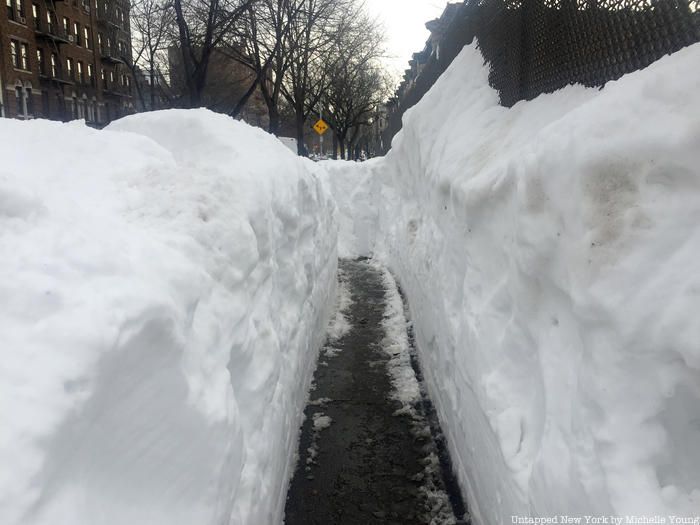
A curfew was instituted for the January 26, 2015 blizzard, but just on car traffic in the streets of New York City. “If you are in your car and you are on any road — town, village, city — doesn’t matter — after 11 o’clock you will technically be committing a crime and get summons up to $300,” Cuomo announced. First responders and emergency personnel were permitted, however. Mass transit was also shut down at 11 PM that day, resulting in many photographs of empty transit hubs — a foreshadowing to the images early in the coronavirus pandemic.
Next, check out 10 Riots in NYC’s History!
Subscribe to our newsletter